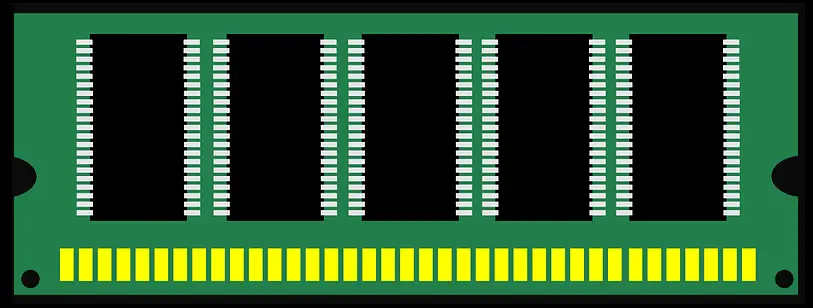The memory structure of Siemens PLC
First of all, let’s take a short look at all the types of Memories in general

But in case of electricity cut off all the stored data in the RAM are lost.
But the Way of UV exposure is a very difficult and complicated method.
It looks like the EPROM but the way of editing, removing, and store new changes for the data is done electrically not by UV light, But the number of erasing and editing it is limited by a certain number of times.
In general, the S7 PLC memory is composed of 4 parts
Stores any data downloaded from the PC to the PLC, this means that any PLC program downloaded to the PLC is stored in the Load Memory.
There are two types of Load Memory
it was used in the old versions of S7 PLCs in which the memory was a RAM and hence in case of power loss all the stored data in the load memory were lost, for this reason, it was mandatory to have a backup battery in order to prevent data loss.
in the new versions of S7 PLCs, the load memory is external and can be purchased separately and it’s called MMC (Micro Memory Card), but in this case the CPU can’t run without the MMC installed.
It’s part of memory where it can store the executive part of the PLC program, it looks like the RAM in the Computer, and in this case, the load memory is the hard disk.
It’s part of the memory where it can store the addressing part of the PLC program like Inputs, Outputs, Timers, Counters, and Bit memory.
It’s part of the memory where it can store data permanently, for instance, if you want to keep the data in specific bit memory stored permanently where in the case of electricity cut off this bit memory is not impacted.
Author: Karim Ali Anwar
If you liked this article, then please subscribe to our YouTube Channel for PLC and SCADA video tutorials.
You can also follow us on Facebook and Twitter to receive daily updates.
Read Next:
VFD simulator download: Master the online tool from the Yaskawa V1000 & programming software for…
The conveyor sorting machine is widely used in the packing industries using the PLC program…
Learn the example of flip-flop PLC program for lamps application using the ladder logic to…
In this article, you will learn the STAR DELTA programming using PLC controller to start…
Lube oil consoles of rotary equipment packages in industrial process plants are usually equipped with…
Rotating equipment packages such as pumps, compressors, turbines need the lube oil consoles for their…